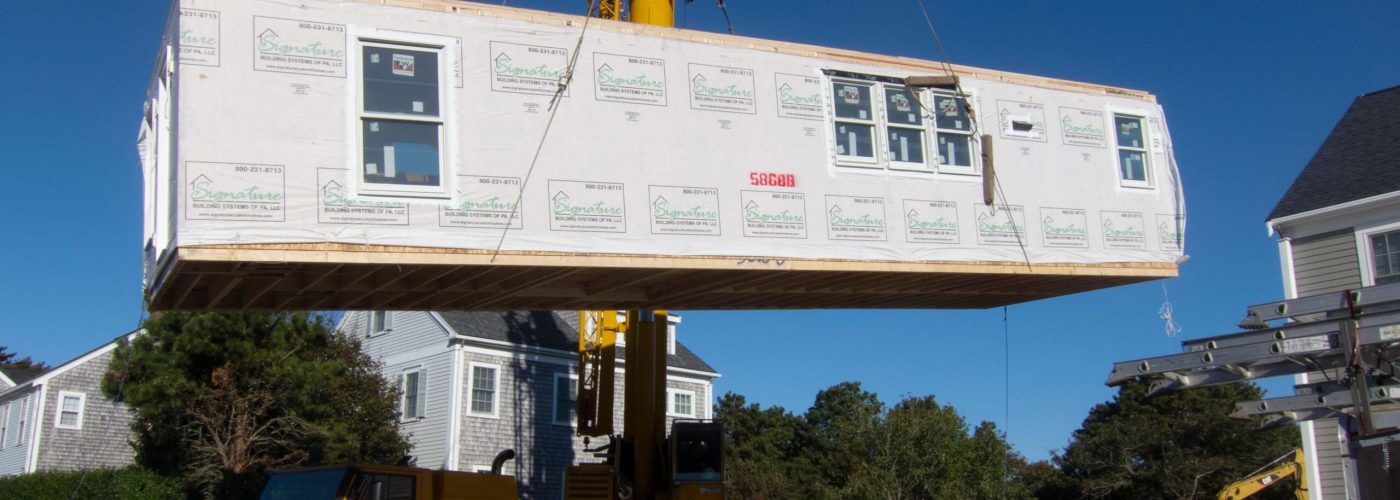The market for modular and prefabricated homes continues to boom, but are we storing up problems for the future that may ultimately cost millions of pounds in repairs and heartache for home owners? According to Global, the country’s fastest growing supplier of insurance backed latent defect warranties, it is a real possibility.
Manufacturers from every part of the globe are now producing and developing more components offsite than ever before with industry estimates suggesting that some 15,000 new modular homes are being built every year in the UK alone – a figure that is rising rapidly.
Every new home requires a latent defects warranty to cover anything unforeseen that might happen between year two and year three. During the first 24 months the builder is responsible for correcting any issues.
It is a system that has traditionally worked well, with more conventional homes seeking a latent defects warranty, being inspected at every stage of the build process. Companies such as Global have a multi stage inspection guide from the moment footings are dug and concrete poured, right up to final delivery, to ensure that each home is fit for purpose.
“The problem is,” said Jim Edwards, commercial Director for Global Home Warranties, “how do you inspect modular components for latent defects? This would require sending our surveyors to every factory currently producing such systems, as far away as China in some cases.”
“This means that while we can inspect the way they are installed, we equally have to accept that offsite components are fit for purpose and have reached the highest possible standard. In most cases this is very much the case, but there is no way of knowing 100% and this is where the real problem lies – without independent inspection at the factories then it is not possible to determine whether we will have to address latent defects issues in the future.”
The market for modular buildings is expected to grow in excess of 6% year on year and there are estimates that the majority of contractors architects and engineers are now designing with or using modules built offsite.
The move to offsite construction has been driven by the need to meet Government targets to build up to 300,000 new homes every year which means that modular and prefabricated components are increasingly being used.
Companies in the UK specialising in offsite construction have an enviable track record in terms of quality and mostly produce components which have been ISO certified or meet all current building regulations and standards.
This means, according to Global, that it will more likely to be imported systems that ultimately fail, possibly because overseas manufacturers are not as familiar with or as aware of building practice within the UK and European construction sector, or simply because standards have been set lower to save money.
“As we know, price is very much a factor within all areas of construction and there is likely to be a temptation to import more and more low-cost building systems,” said Jim Edwards. “They may do exactly what it says on the tin but none of us yet know what is likely to happen two, five or even 10 years down the line and now is the time to ask ourselves – should we be more stringent by having independent inspection processes in every factory that produces such materials.”
There is growing evidence and other industry experts agree that we could be storing up problems. Recent reports suggest that the lack of detailed data on the durability of modular homes in the UK could be a considerable barrier for construction professionals concerned about the long-term viability of offsite components.
Financial service providers, including insurers, mortgage lenders and valuers need to have certainty that modular homes are safe and durable if they are to engage with them, which is why we are now seeing Global and other industry experts calling for the development of a digital database that records the design, processes and materials used in the construction of buildings.
Digital technology would make it possible to create a database that would store and track information about the built environment and would record the materials and processes used. It could also track repairs and alterations in larger housing developments and make sure that this information would be available to relevant stakeholders, including insurers and fire services.
“This will never be as good as a personal inspection process,” said Jim Edwards, “but it would certainly provide more confidence and peace of mind for the entire industry and ultimately for the insurance companies that have to back latent defects warranties – and the time to act is now.”





